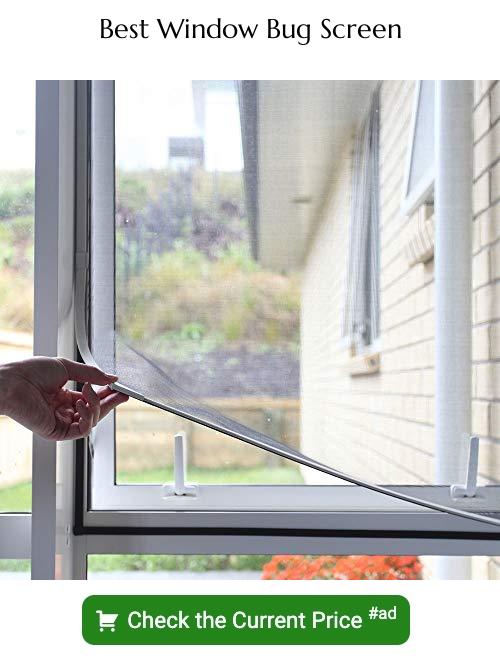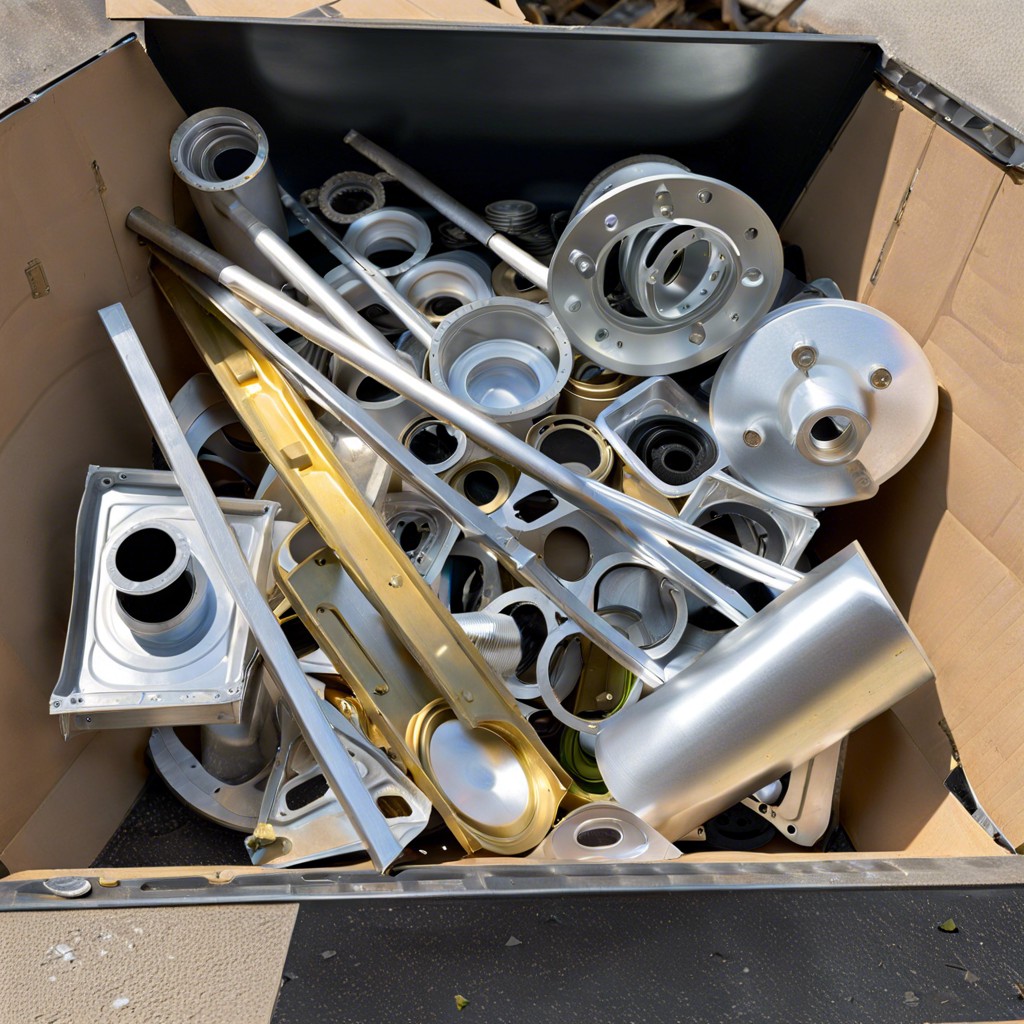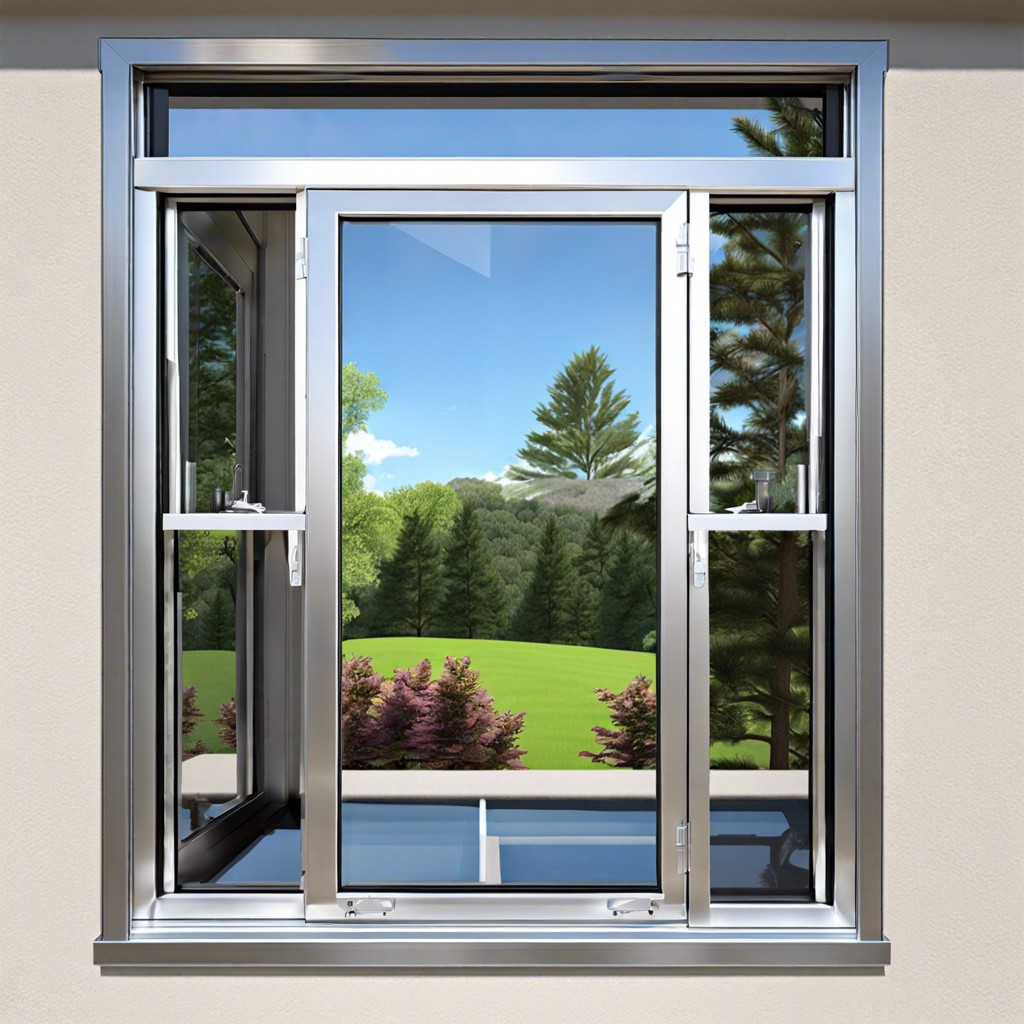Discover effective strategies to keep pesky bugs at bay and maintain a bug-free environment by preventing them from entering through your windows.
As the weather warms up, windows become the perfect gateway for bugs to enter your home. It’s not only annoying but also unhygienic and can cause serious health issues.
But don’t worry, there are simple steps you can take to prevent bugs from coming through your windows. In this blog post, we’ll explore some effective ways to keep those pesky insects at bay and ensure a bug-free home environment.
So let’s dive in!
Key takeaways:
- Insect-proof windows are essential for a bug-free home environment.
- Different types of window screens provide varying levels of protection.
- DIY window screens can be easily made using materials like fiberglass or aluminum.
- Proper installation and sealing of window screens are crucial for bug prevention.
- Regular maintenance, cleaning, and repair of screens are necessary.
Importance of Insect-Proof Windows
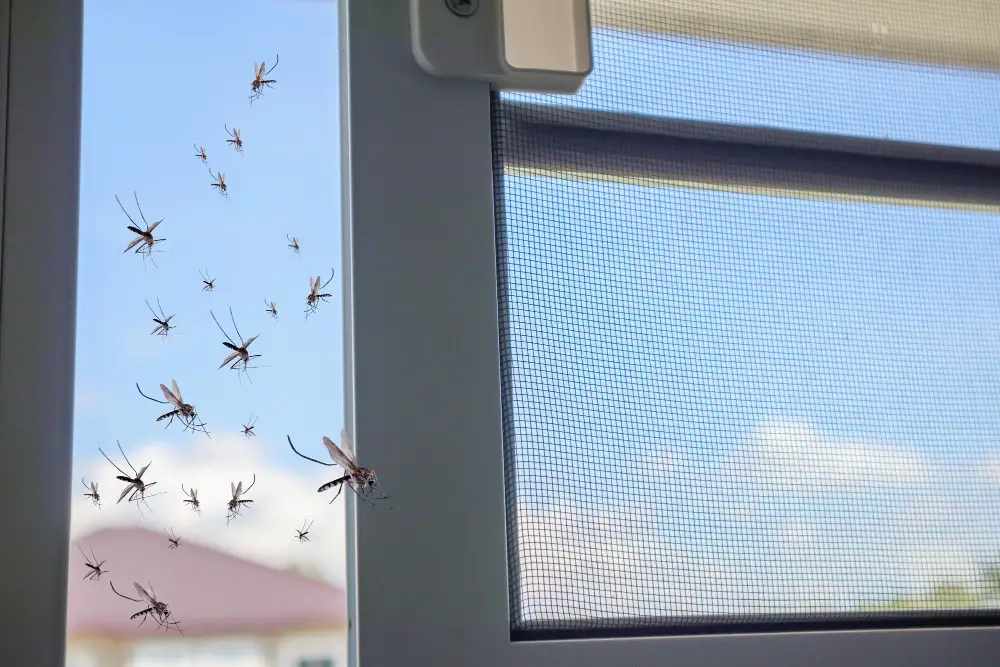
Insect-proof windows are essential for maintaining a bug-free home environment. Bugs can enter through even the smallest gaps and cracks in your windows, making it crucial to ensure that your windows are properly sealed and equipped with screens.
Not only do insect-proof windows keep bugs out, but they also provide added security against intruders while allowing fresh air to circulate throughout your home. By investing in high-quality window screens or netting solutions, you can enjoy the benefits of natural ventilation without worrying about unwanted pests entering your living space.
In the next sections of this article, we’ll explore different types of window screens and materials as well as effective strategies for sealing gaps and cracks around your windows to prevent bugs from coming through them.
Types of Window Screens
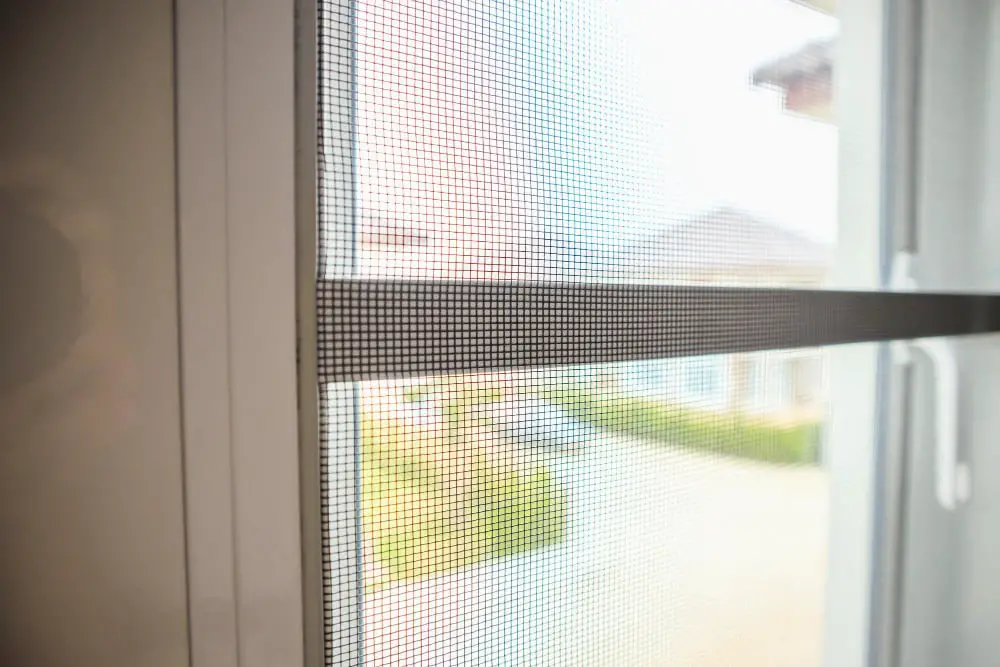
Window screens are designed to keep insects out while allowing fresh air in. There are different types of window screens available on the market, each with its own unique features and benefits.
The most common type of screen is made from fiberglass mesh material that’s tightly woven together for maximum insect protection. Aluminum wire mesh is another popular option that provides durability and strength against harsh weather conditions.
For those who prefer a more eco-friendly solution, there are also natural fiber options such as bamboo or cotton-based materials that can be used for window screening.
No matter which type you choose, make sure it fits snugly into your windowsill frame without any gaps or holes where bugs could sneak in.
Comparing Screen Materials
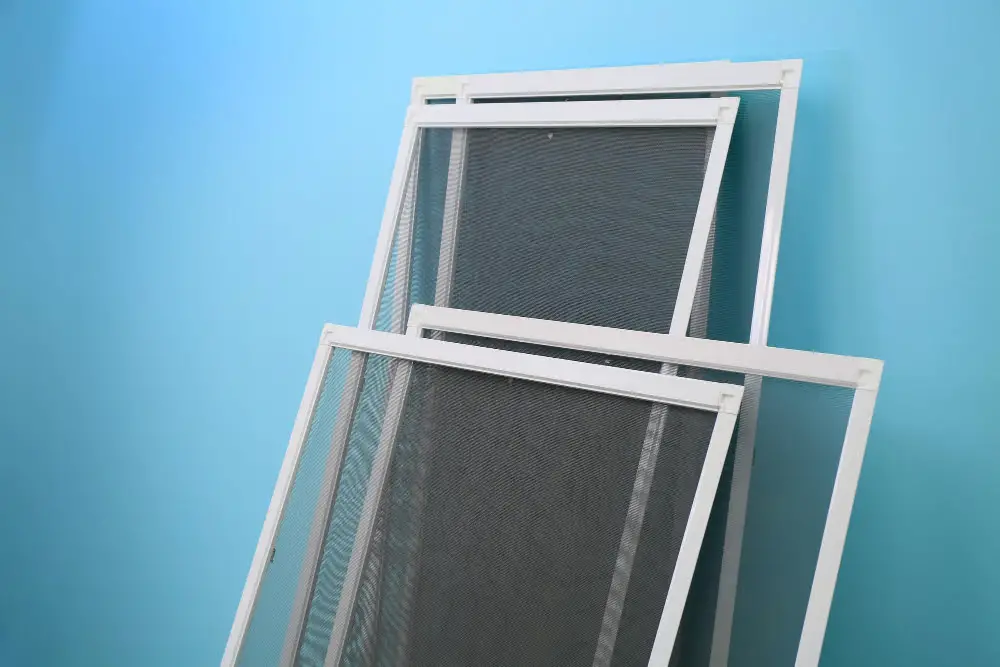
There are several types of window screens available in the market, each with its own set of advantages and disadvantages. Some common materials include aluminum, fiberglass, stainless steel mesh and pet-resistant screens.
Aluminum screens are affordable but not as durable as other options. Fiberglass is a popular choice due to its affordability and flexibility; however it can be easily damaged by pets or strong winds.
Stainless steel mesh offers excellent durability against harsh weather conditions but can be expensive compared to other options.
Pet-resistant screens have become increasingly popular among homeowners who have furry friends at home that love scratching on doors or windows. These types of screen materials offer extra strength against pet damage while still allowing for proper ventilation.
DIY Window Screen Options
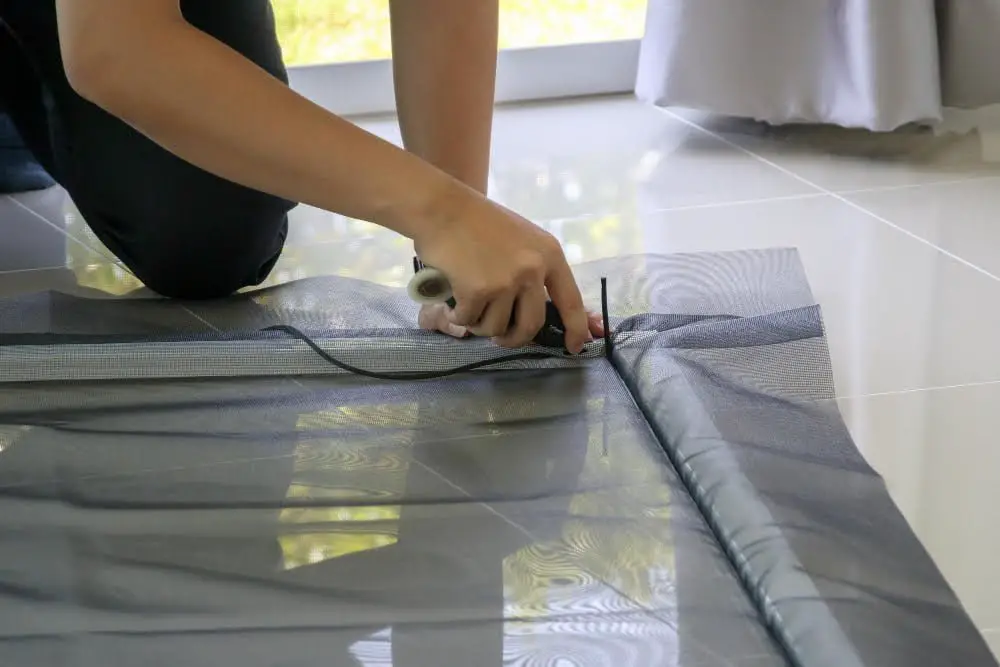
You can easily make them yourself with just a few materials and some basic tools. The most common types of DIY window screens include fiberglass, aluminum, and copper wire mesh.
Fiberglass is the most popular material used in making DIY window screens because it’s affordable and easy to work with. It’s also resistant to rusting or corroding over time.
Aluminum is another great option for those who want something more durable than fiberglass but still lightweight enough for easy installation. It’s also resistant to corrosion and won’t sag or stretch over time like other materials might.
Copper wire mesh is the best choice if you’re looking for something that will last longer than other options while providing superior protection against insects such as mosquitoes or flies due to its smaller holes size compared with other screen meshes.
Installing Window Screens
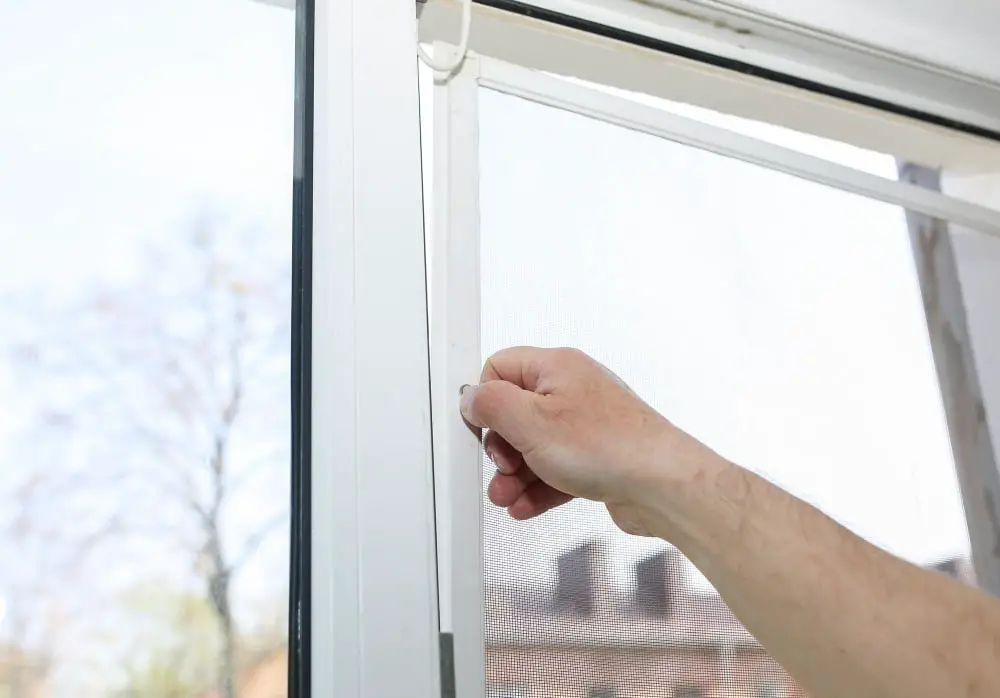
These screens act as a barrier between your indoor space and the outside environment, keeping insects out while allowing fresh air in.
To install window screens, you’ll need to measure the dimensions of each window frame accurately. You can then purchase pre-made screen frames or make them yourself using materials like aluminum or fiberglass mesh.
Once you have your screen frames ready, it’s time to attach them securely onto each window frame using screws or clips. Make sure that there are no gaps between the screen and the frame where bugs could sneak in.
If you’re not confident about installing screens on your own, consider hiring a professional installer who can ensure that they fit correctly and provide maximum protection against pests.
Proper Window Sealing
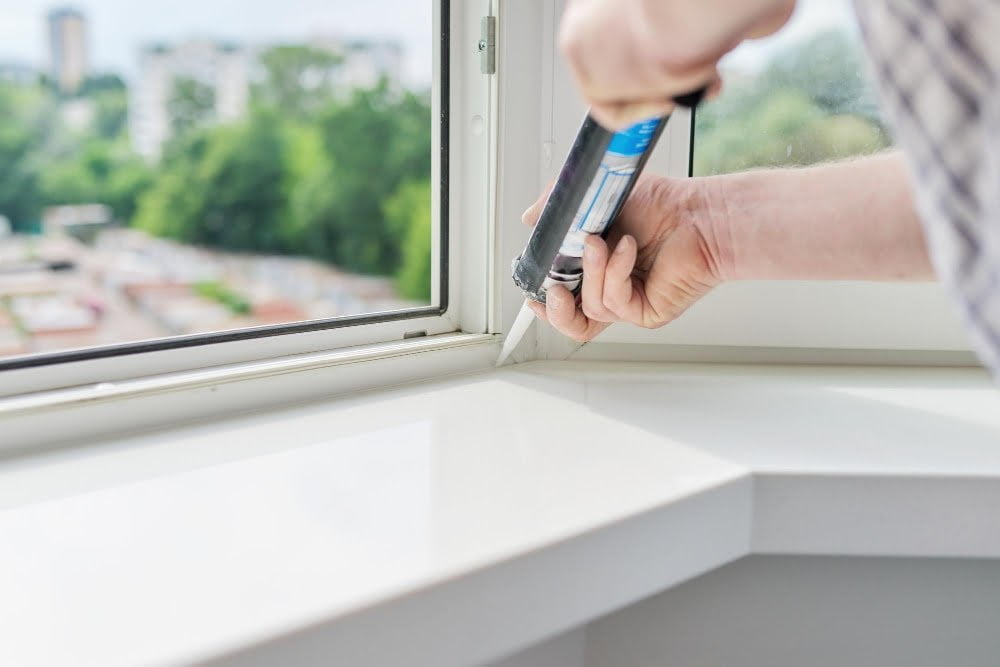
Bugs can easily enter through gaps and cracks around the window frame, so it’s important to seal them off.
To start, inspect all areas around your windows for any gaps or cracks that could allow insects in. Use a flashlight to help you see better if necessary.
Once you’ve identified these areas, use weatherstripping or caulking material to fill in any openings.
When choosing caulk for sealing purposes, make sure it’s specifically designed for outdoor use and can withstand extreme temperatures without cracking or shrinking over time. Silicone-based caulks are often recommended as they provide excellent adhesion and flexibility.
Apply the caulk evenly along the gap using a caulking gun while ensuring there are no air pockets left behind. Smooth out excess caulk with a putty knife before allowing it enough time (usually 24 hours) to dry completely before painting over if needed.
Seal Window Gaps and Cracks
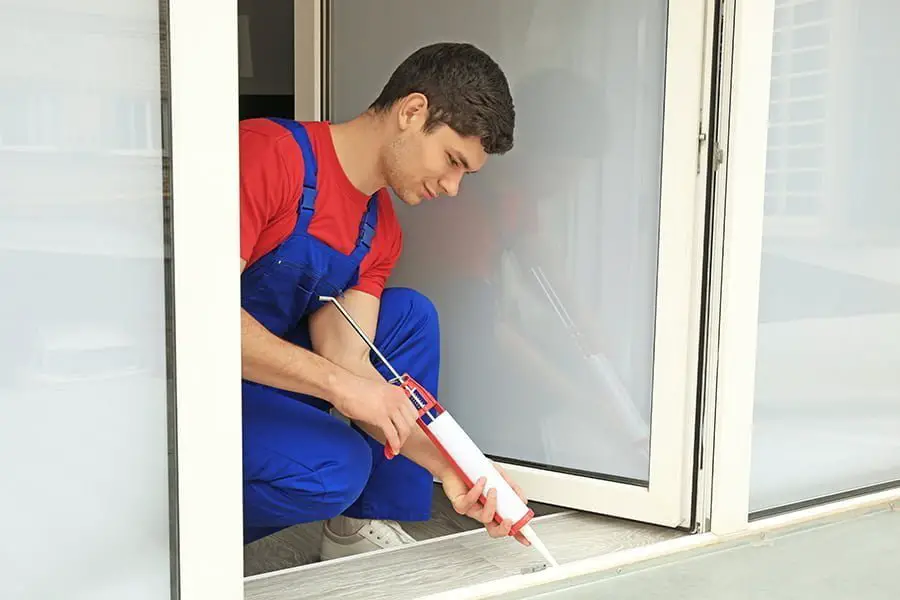
Even small openings can provide an entry point for insects, so it’s important to be thorough in your inspection.
Start by examining the window frame and sash for any visible gaps or cracks. Use a flashlight if necessary to get a better view of hard-to-see areas.
Once you’ve identified problem spots, use weatherstripping tape or caulk to seal them up.
For larger gaps and holes, consider using expanding foam insulation as an alternative solution. This type of insulation expands as it dries and fills in even the tiniest crevices.
Remember that proper sealing not only prevents bugs but also helps with energy efficiency by keeping cool air inside during summer months and warm air inside during winter months.
Choose the Right Caulk
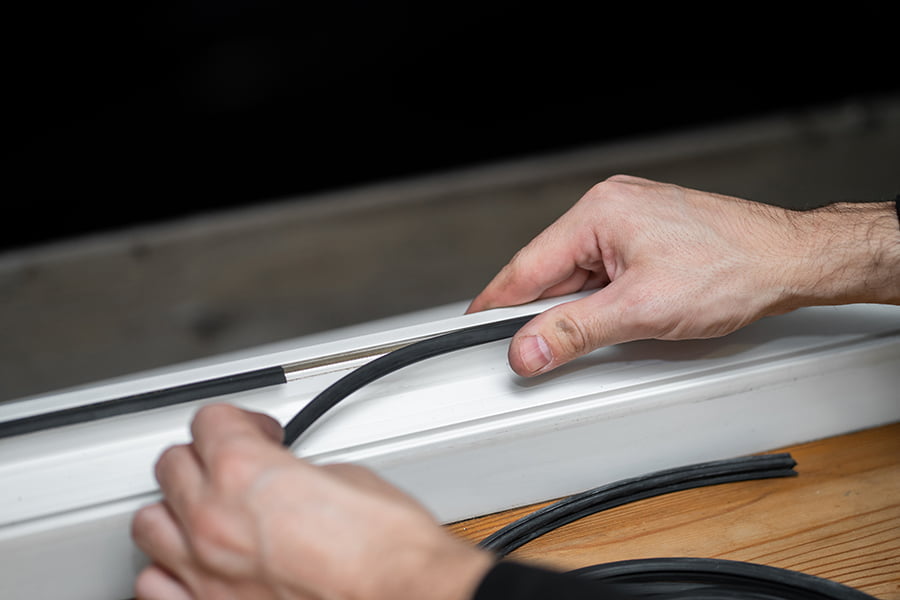
Caulk is a sealant that fills gaps and cracks around window frames, preventing insects from finding their way inside. When selecting a caulk, it’s important to choose one that’s specifically designed for outdoor use and can withstand extreme temperatures.
Silicone-based caulks are ideal for sealing windows as they’re waterproof and flexible enough to expand or contract with temperature changes without cracking or breaking down over time. They also have excellent adhesion properties, ensuring a tight seal around your window frames.
When applying caulk, make sure the area is clean and dry before starting. Use a caulking gun to apply an even bead of caulk along the gap between the frame and wall or glass pane if necessary.
Smooth out any excess using your finger or a tool like a putty knife.
Apply Caulk to Window Gaps
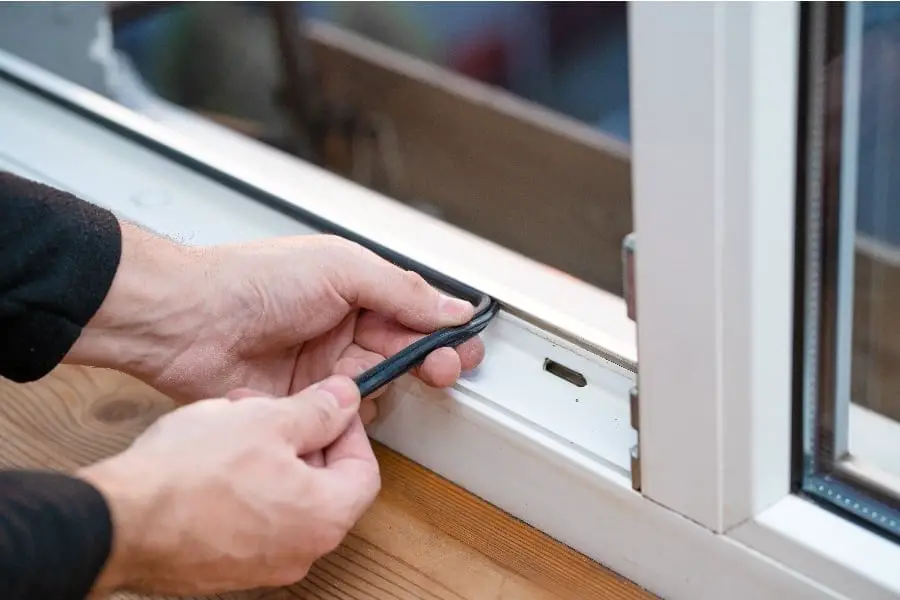
Caulk is a flexible material that can be used to fill in small openings around window frames, preventing insects from sneaking inside.
To apply caulk, start by cleaning the area around the gap or crack thoroughly. Use a putty knife or scraper to remove any old caulking and debris.
Next, cut off the tip of your tube of caulk at an angle and insert it into a caulking gun.
Slowly squeeze out a steady stream of caulk along the gap while holding down on its trigger until you reach its end point. Then use your finger (or another tool) dipped in water to smooth out and shape it evenly across all surfaces for better adhesion.
Remove Excess Caulk
Excess caulk can create a messy appearance and may not provide an effective seal against bugs.
To remove excess caulk, use a putty knife or scraper tool at a 45-degree angle. Gently scrape away any extra material until the surface is smooth and even with the surrounding area.
Be careful not to damage your window frame or screen during this process.
After removing excess caulking, allow sufficient time for it to dry completely before testing its effectiveness in preventing bugs from entering through your windows.
Repair Damaged Screens

Even small holes or rips can allow bugs to enter your home. Fortunately, repairing a screen is relatively easy and inexpensive.
To fix a damaged screen, start by removing the old spline (the rubber cord that holds the screen in place) with a flathead screwdriver or pliers. Then remove the old screening material and discard it.
Next, cut a new piece of screening material slightly larger than the frame of your window so that there is enough excess to wrap around all four sides of the frame.
Lay this new piece over your window frame and use a roller tool (or even just an old credit card) to press it into place along one side of the frame channel while pulling taut on opposite end until you reach other side where again press down firmly using roller tool before trimming off any excess with scissors leaving about 1/4 inch extra for overlap purposes when installing spline back into groove around perimeter edge which will hold everything securely in place once reinstalled properly!
Fix Screen Rips and Holes
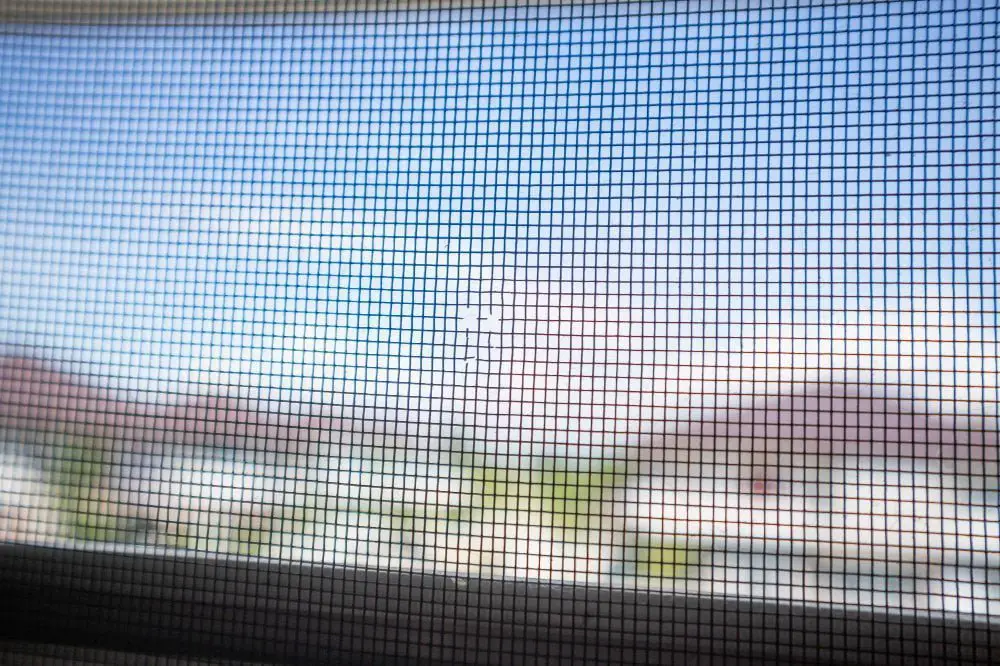
Even the smallest tear can allow bugs to enter your home and disrupt your peace of mind. Fortunately, repairing screen rips and holes is a simple process that you can do yourself.
To start with, gather some basic tools such as scissors or a utility knife, needle-nose pliers (optional), thread (matching the color of the screen), and a patching material like fiberglass mesh or aluminum patches.
Next up is identifying where exactly on the screen there are tears/holes present. Once identified cut out any frayed edges around these areas using scissors/utility knife so that they don’t get caught while stitching.
Now take an appropriate sized patching material for covering up this hole/tear area from behind by placing it over one side of torn fabric then carefully stitch along its perimeter using matching thread until all sides are secured tightly together again without leaving any gaps between stitches which could let insects through!
Regular Screen Maintenance

Over time, screens can become damaged or develop holes and tears that allow insects to enter your home. To prevent this from happening, inspect your window screens regularly for any signs of damage.
If you notice any rips or holes in the screen material, repair them as soon as possible using a patch kit designed for screen repairs. You can find these kits at most hardware stores and they are easy to use.
Make sure to clean your window areas regularly by wiping down the frames and removing any debris that may have accumulated on the screen surface. This will help keep bugs from being attracted to dirty surfaces around windows.
Clean Window Areas
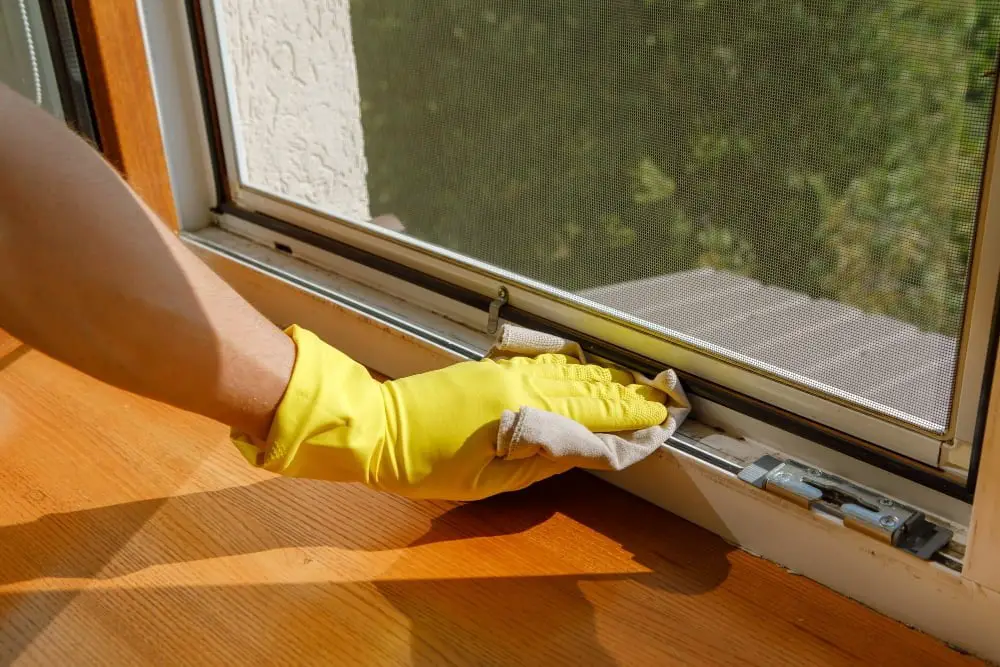
Dirty windows attract insects, and they can easily find their way inside through the gaps or cracks in the window frames. Therefore, it’s crucial to regularly clean both sides of your windows with a mild detergent and water solution.
Make sure to wipe down all areas around the window frame, including sills and tracks where dirt tends to accumulate. Use a soft-bristled brush or vacuum cleaner attachment to remove any debris that may have accumulated in these areas.
Avoid leaving standing water on or near your windows as this can also attract bugs like mosquitoes which breed in stagnant water.
Window Netting Solutions
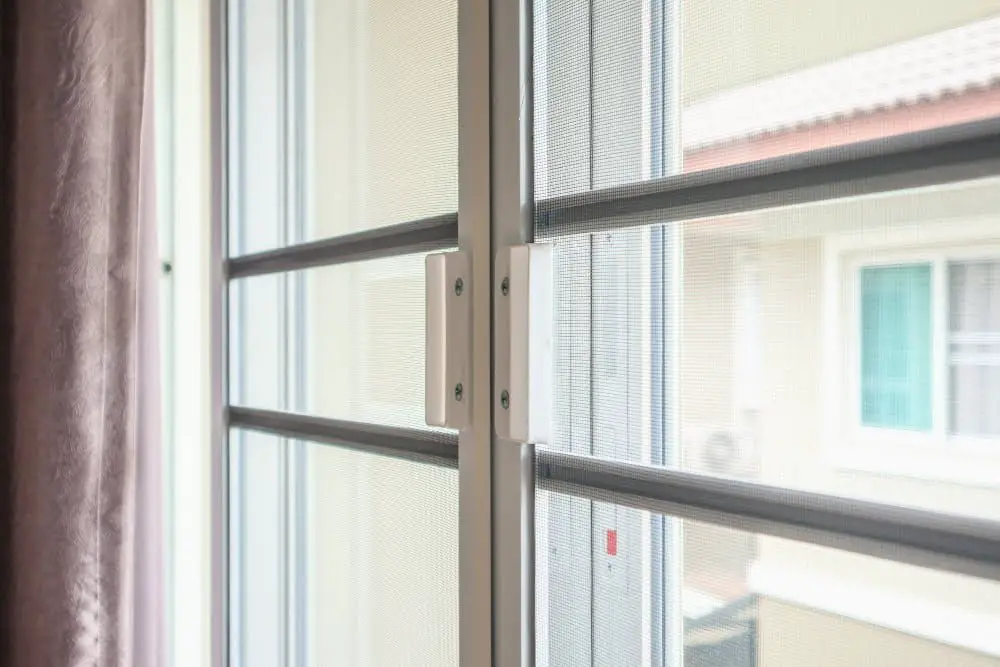
Window nets are made of fine mesh and can be easily installed on windows, doors, and other openings in your home. They allow fresh air to flow through while keeping insects out.
There are different types of window nets available in the market such as magnetic screens, adhesive screens, and Velcro screens. Magnetic screens use magnets to attach themselves to the frame of the window while adhesive ones stick directly onto it.
Velcro screen options come with a self-adhesive strip that attaches itself around the edges of a frame.
When choosing a net for your windows or doors make sure you select one that fits properly without leaving any gaps or holes where bugs can enter through.
Window Design for Bug Prevention
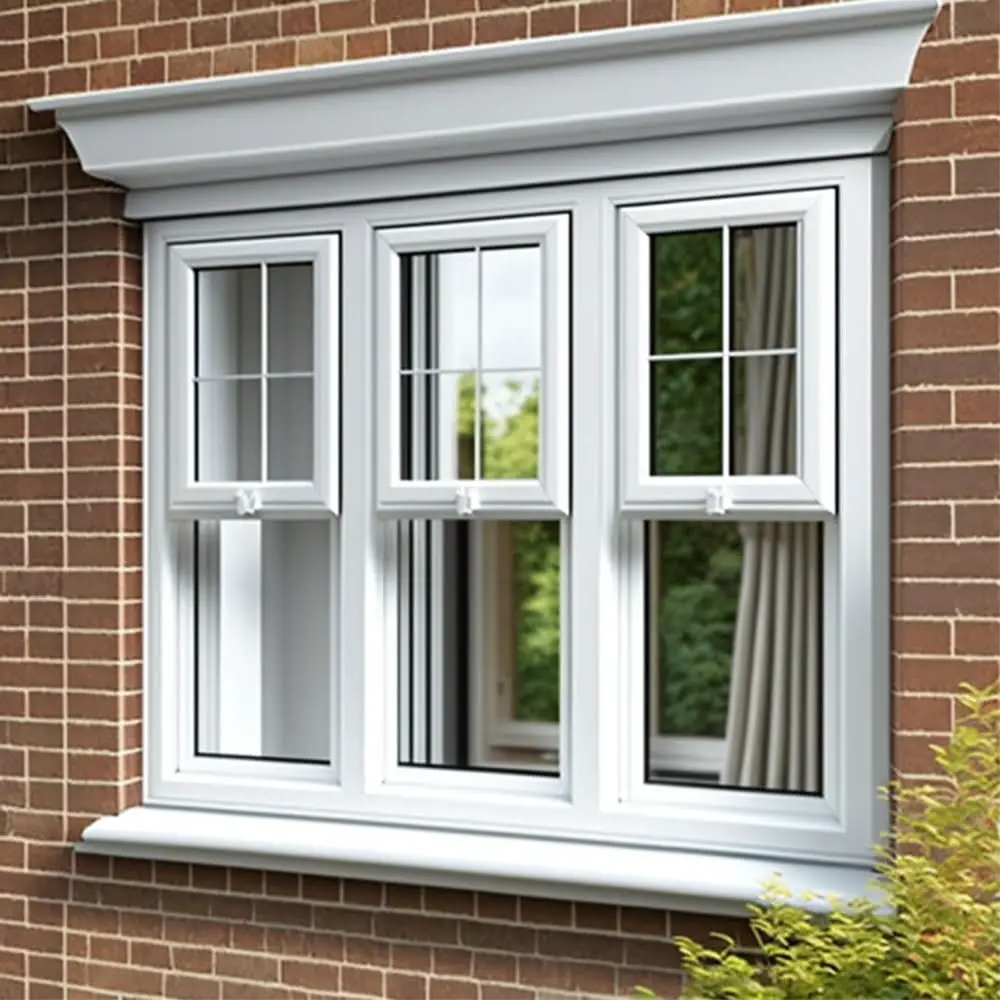
Windows that open vertically, such as double-hung or single-hung windows, are more prone to letting bugs inside than those that slide horizontally like sliding or casement windows. This is because vertical opening windows have gaps on the sides where insects can easily crawl through.
To prevent this issue, consider installing horizontal sliding or casement-style windows instead. These types of window designs provide a tighter seal and fewer opportunities for pests to enter.
You may want to consider adding screens with smaller mesh sizes to further reduce the chances of bug infiltration.
Essential Oils for Bug Prevention

They work by masking the scent of humans, which is what attracts insects in the first place. Some essential oils also contain compounds that are toxic to bugs, making them an even more potent bug repellent.
Lavender oil is one of the most popular essential oils for bug prevention due to its pleasant fragrance and insect-repelling properties. Citronella oil is another great option as it has been proven effective against mosquitoes.
To use essential oils for bug prevention, simply add a few drops into a diffuser or mix with water in a spray bottle and apply around windowsills or other areas where bugs may enter your home.
Natural Pest Control Methods

Essential oils such as peppermint, lavender, and eucalyptus have been known to repel bugs effectively. You can mix these oils with water and spray them around your windows or use diffusers inside your home.
Another effective method is using diatomaceous earth (DE), which is a fine powder made from fossilized algae. DE works by dehydrating insects’ exoskeletons when they come into contact with it.
Planting bug-repelling plants like marigolds or citronella near your windows can help keep pests away while adding some greenery to the area.
Bug-Resistant Window Plants

Certain plants have natural bug-repelling properties that make them an excellent addition to any window garden. Some of the best bug-resistant window plants include lavender, basil, mint, lemongrass, and marigold.
Lavender is known for its calming scent that repels mosquitoes and flies. Basil has a strong aroma that keeps flies away while also being useful in cooking.
Mint is another herb with a potent smell that deters ants and spiders from entering your home.
Lemongrass contains citronella oil which naturally repels mosquitoes while adding freshness to the air around you. Marigolds contain pyrethrum which acts as an insecticide against many common pests like aphids or whiteflies.
Ventilation and Prevention
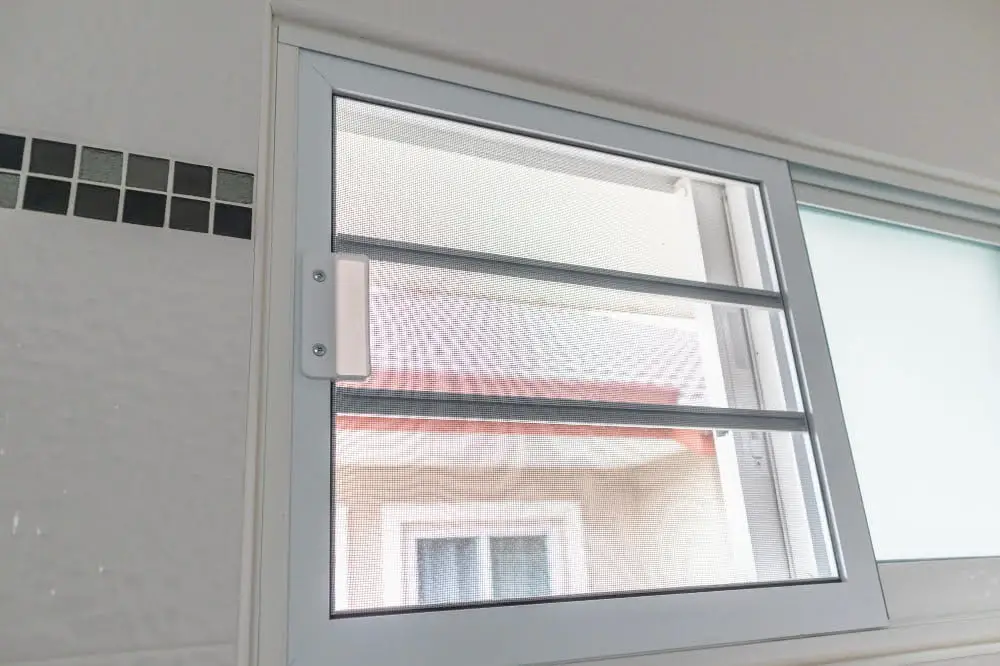
It can also be an open invitation for bugs to enter your home. To prevent this from happening, you need to ensure that your windows are properly screened and sealed while still allowing adequate ventilation.
One way to achieve proper ventilation without compromising on bug prevention is by installing window fans or air conditioning units with built-in screens. These devices allow fresh air into the room while keeping insects out.
Another option is using window netting solutions such as mosquito nets or mesh curtains that attach directly onto the frame of the window. This provides an additional layer of protection against bugs while still allowing airflow.
It’s important to note that even with these measures in place, regular maintenance and cleaning are necessary to keep your windows functioning optimally in terms of both ventilation and bug prevention. By following these tips, you can enjoy a well-ventilated home free from pesky insects all year round!
FAQ
What can I put in my windows to keep bugs out?
Install caulk in your windows to seal gaps and prevent bugs from entering your home.
How do you keep bugs out of windowsill?
To keep bugs out of windowsill, rub citronella oil on the outside of your windowsills as it effectively deters mosquitoes and other insects due to its strong smell.
Will bugs come through window at night?
Bugs may come through windows at night, especially if there are lights attracting them, but they do not typically wait by open windows to enter.
How are bugs getting through my window screen?
Bugs are getting through your window screen due to holes or tears in the mesh, so keeping screens in good repair is essential for preventing insects during summer.
What are the most effective types of window screens for preventing bug entry?
The most effective types of window screens for preventing bug entry are tightly woven mesh screens, such as fiberglass screens, aluminum screens or solar screens with fine mesh.
Are there specific plants or natural repellents that can be placed near windows to deter bugs?
Specific plants and natural repellents, such as lavender, basil, and lemongrass, can be placed near windows to deter bugs.
What preventive measures can be taken during window installation to minimize the chances of bugs getting in?
To minimize the chances of bugs getting in during window installation, ensure proper sealing and the use of screens or mesh on windows.
Recap
